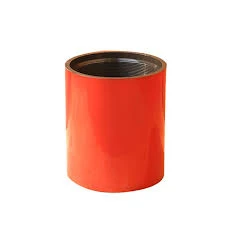- Afrikaans
- Albanian
- Amharic
- Arabic
- Armenian
- Azerbaijani
- Basque
- Belarusian
- Bengali
- Bosnian
- Bulgarian
- Catalan
- Cebuano
- Corsican
- Croatian
- Czech
- Danish
- Dutch
- English
- Esperanto
- Estonian
- Finnish
- French
- Frisian
- Galician
- Georgian
- German
- Greek
- Gujarati
- Haitian Creole
- hausa
- hawaiian
- Hebrew
- Hindi
- Miao
- Hungarian
- Icelandic
- igbo
- Indonesian
- irish
- Italian
- Japanese
- Javanese
- Kannada
- kazakh
- Khmer
- Rwandese
- Korean
- Kurdish
- Kyrgyz
- Lao
- Latin
- Latvian
- Lithuanian
- Luxembourgish
- Macedonian
- Malgashi
- Malay
- Malayalam
- Maltese
- Maori
- Marathi
- Mongolian
- Myanmar
- Nepali
- Norwegian
- Norwegian
- Occitan
- Pashto
- Persian
- Polish
- Portuguese
- Punjabi
- Romanian
- Russian
- Samoan
- Scottish Gaelic
- Serbian
- Sesotho
- Shona
- Sindhi
- Sinhala
- Slovak
- Slovenian
- Somali
- Spanish
- Sundanese
- Swahili
- Swedish
- Tagalog
- Tajik
- Tamil
- Tatar
- Telugu
- Thai
- Turkish
- Turkmen
- Ukrainian
- Urdu
- Uighur
- Uzbek
- Vietnamese
- Welsh
- Bantu
- Yiddish
- Yoruba
- Zulu
Understanding Well Tubing and Casing Systems in Oil and Gas Production
Well Tubing and Casing Essential Components of Oil and Gas Exploration
In the oil and gas industry, drilling a well is a complex undertaking that requires a comprehensive understanding of various technical components. Among these, well tubing and casing play a crucial role in ensuring the integrity and efficiency of oil and gas wells. This article delves into the significance of well tubing and casing, their functions, types, installation processes, and maintenance considerations.
What are Well Tubing and Casing?
Well casing refers to the series of steel pipes that are installed in a wellbore after it has been drilled. The primary purpose of casing is to stabilize the well, prevent the collapse of the borehole, and protect groundwater reservoirs from contamination. Casing also facilitates the control of the fluid dynamics within the wellbore.
In contrast, well tubing is a smaller diameter pipe fitted inside the casing that allows for the transportation of oil, gas, or water from the reservoir to the surface. Tubing is typically removable, allowing operators to replace it as needed without the entire casing being disturbed.
Functions of Well Tubing and Casing
The main functions of well casing include
1. Structural Support Casing stabilizes the wellbore, preventing it from collapsing under the pressure of surrounding rock formations.
2. Sealing It protects groundwater from contamination by sealing off the well from surrounding aquifers and layers of rock.
3. Isolation Casing isolates different pressure zones in the well, preventing fluid from migrating between them.
4. Facilitation of Flow The interior surface of the casing is smooth, helping to enhance the flow of fluids during extraction.
Well tubing serves several essential purposes, such as
1. Production Flow Tubing channels the produced hydrocarbons (oil or gas) from the reservoir to the surface facilities.
well tubing and casing

3. Ease of Maintenance The removable nature of tubing allows for easy access for repairs, cleaning, or replacement, thereby reducing downtime.
Types of Casing and Tubing
There are several types of casing used in drilling operations
- Surface Casing Installed first to protect freshwater aquifers and maintain well integrity during the drilling process.
- Intermediate Casing Positioned after the surface casing to provide additional support and prevent wellbore collapse in unstable formations.
- Production Casing This is the innermost layer that directly intersects the oil or gas reservoir, allowing for production activities.
As for tubing, it comes in various grades and sizes depending on the pressure, temperature conditions, and the type of fluid being transported. Common materials include carbon steel and stainless steel, chosen for their strength and resistance to corrosion.
Installation and Maintenance
The installation of casing and tubing requires meticulous planning and execution. Casing is set in place and cemented to secure it against wellbore walls. The cement not only secures the casing but also forms a hydraulic seal to isolate different zones. Tubing is then installed through the casing and is often equipped with various fittings, such as packers and valves, to aid production.
Regular maintenance is vital to ensure the longevity and performance of both casing and tubing. Operators must monitor for signs of wear, corrosion, or blockages. Advanced technologies, such as downhole monitoring systems, are employed to keep track of the conditions within the well, allowing for prompt intervention when necessary.
Conclusion
In summary, well tubing and casing are indispensable components in the oil and gas exploration industry. Their design and functionality are essential for maintaining well integrity, ensuring safety, and optimizing production efficiency. As exploration activities continue to evolve with advancements in technology, the importance of these components remains paramount in facilitating the sustainable extraction of valuable natural resources.
-
Tubing Pup Joints: Essential Components for Oil and Gas OperationsNewsJul.10,2025
-
Pup Joints: Essential Components for Reliable Drilling OperationsNewsJul.10,2025
-
Pipe Couplings: Connecting Your World EfficientlyNewsJul.10,2025
-
Mastering Oilfield Operations with Quality Tubing and CasingNewsJul.10,2025
-
High-Quality Casing Couplings for Every NeedNewsJul.10,2025
-
Boost Your Drilling Efficiency with Premium Crossover Tools & Seating NipplesNewsJul.10,2025







